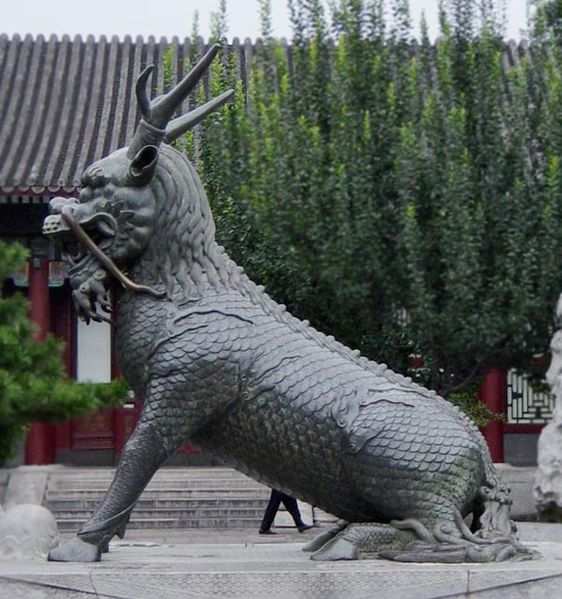The
Qilin (Chinese: 麒麟),
also spelled Kirin (from Japanese) or sometimes Kyrin, is a mythical hoofed
Chinese chimerical creature known throughout various East Asian cultures, and is
said to appear in conjunction with the arrival of a sage. It is a good omen that
brings rui (Chinese: 瑞,
roughly translated as “serenity” or “prosperity”). It is often depicted
with what looks like fire all over its body. It is sometimes called the
“Chinese unicorn” due to conflation with the unicorn by Westerners.
The
earliest references to the Qilin are in the 5th century BC book Zuo Zhuan. The
Qilin made appearances in a variety of subsequent Chinese works of history and
fiction. At one point, however, it became identified with the giraffe, and even
today, the giraffe is called a “kirin” by the Japanese, and Koreans.
The
Qilin became a stylized representation of the giraffe in Ming Dynasty. It is
known that on Zheng He’s voyage to East Africa (landing, among other places,
in modern-day Kenya), the fleet brought back two giraffes to Beijing. It is also
known that these two giraffes were referred to as “Qilins”. The Emperor
proclaimed the giraffes magical creatures, whose capture signaled the greatness
of his power.
The identification between the Qilin and the giraffe is supported by some attributes of the Qilin, including its vegetarian and quiet nature. Its

reputed ability to “walk on grass without disturbing it” may be related to the giraffe’s long legs. Also the Qilin is described as having antlers like a deer and scales like a dragon or fish; since the giraffe has horn-like “ossicones” on its head and a tessellated coat pattern that looks like scales, it is easy to draw an analogy between the two creatures.
It
is unlikely that giraffes and qilin were regarded as the same creature in
pre-modern times however. For example, typical depictions of the qilin have much
shorter necks than giraffes, suggesting that it was originally a type of deer,
or perhaps an antelope.

